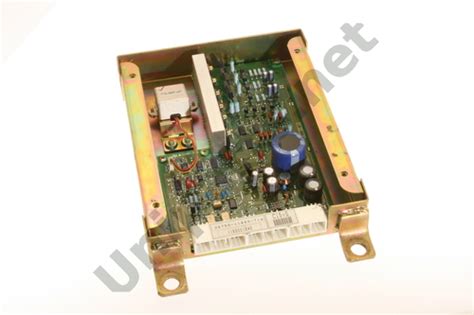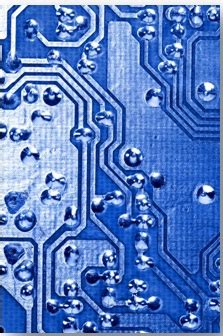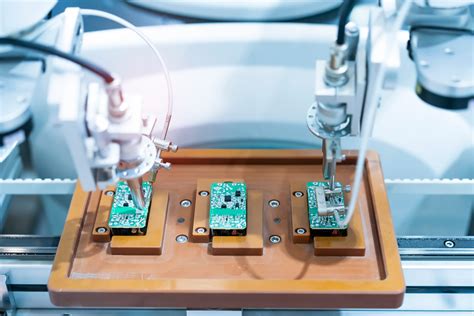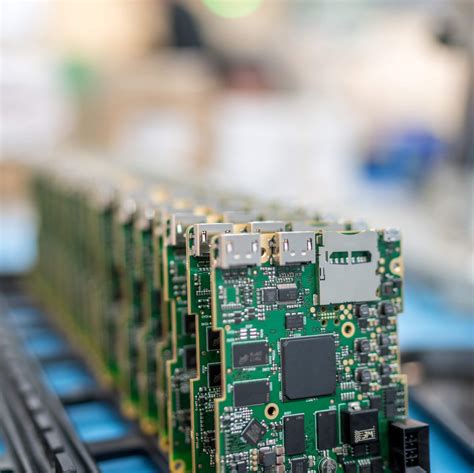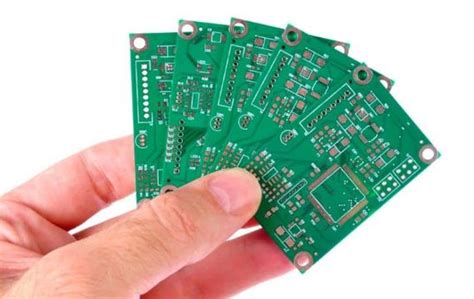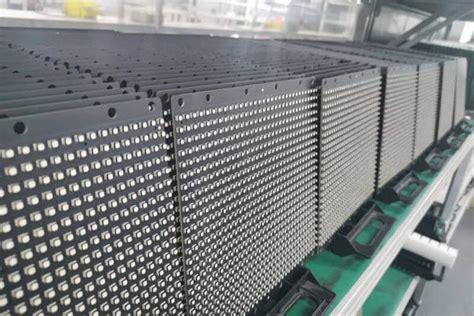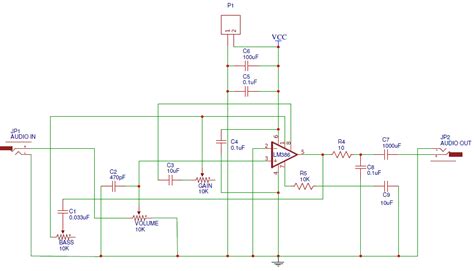Mastering Board Assembly: Essential Techniques for Success
Key Takeaways
In mastering board assembly, it is crucial to grasp the foundational aspects of pcb assembly and the particular nuances involved. Understanding the core elements of pcba processes lays the groundwork for advancing your skills. Essential tools and materials play a pivotal role in enhancing assembly efficiency. By utilizing high-quality tools, you can achieve precision in your assembly work, greatly influencing the reliability of the final product. An encompassing approach includes familiarizing yourself with step-by-step techniques that promote accuracy, especially when handling intricate designs.
Moreover, it is vital to acknowledge common challenges encountered in board assembly processes and have proactive solutions at hand. Implementing best practices for quality control in electronic assemblies ensures that your final product not only meets but exceeds industry standards. To stay competitive, consider incorporating innovative methods aimed at improving overall efficiency, which can significantly streamline workflows and reduce turnaround times.
Additionally, staying informed about future trends in board assembly technology can provide a competitive edge and offer insights into emerging practices that enhance the reliability of electronic assemblies. By fostering a comprehensive understanding of these key takeaways, you equip yourself with the knowledge necessary to tackle various aspects of pcb assembly, ensuring each project achieves success and delivers high-quality outcomes.
Understanding the Basics of Board Assembly
Board assembly is a critical stage in the creation of electronic devices, encompassing processes that transform raw materials into fully functional pcb assembly units. Understanding the fundamental principles is essential for anyone involved in pcba. At its core, board assembly involves placing electronic components onto a printed circuit board (PCB), followed by soldering, which ensures stable connections among components.
It is crucial to recognize that effective preparation can significantly improve efficiency and accuracy. Before beginning the assembly process, ensure all necessary tools and materials are gathered. This includes soldering equipment, tweezers, and appropriate soldering materials tailored for pcb assembly. Furthermore, meticulous component placement can help to avoid common pitfalls, such as misaligned or incorrect positioning of components.
“A clean workspace not only enhances focus but also decreases the chances of errors during pcba.”
By adhering to established techniques, such as checking part numbers and orientations against design specifications before soldering, individuals can increase overall reliability in their assemblies. This foundational knowledge contributes significantly to the overall quality and functionality of the final product.
In summary, mastering these basic principles lays the groundwork for more advanced assembly practices and troubleshooting strategies, ultimately leading to superior outcomes in electronic design and manufacturing.
Essential Tools and Materials for Effective Assembly
In the realm of pcb assembly or pcba, having the right tools and materials is crucial for achieving optimal results. First and foremost, a reliable soldering iron is essential; it allows for precise application of heat to create secure connections between components. Additionally, the use of high-quality solder wire ensures that joints form correctly and withstand various stresses during operation. Components must be organized properly, so investing in a compartmentalized storage system can help manage tiny elements like resistors, capacitors, and connectors. Furthermore, employing a magnifying glass or microscope improves accuracy in positioning components on the printed circuit board (PCB).
In the field of pcb assembly, adhesives play an integral role as well; they can provide additional support and stability to components that may not be soldered directly onto the PCB. When working with sensitive electronic parts, anti-static mats are crucial to prevent static electricity discharge that can damage components. Similarly, tweezers with fine tips are indispensable for handling small parts during assembly.
Another vital material includes high-quality flux to improve the wettability of solder and reduce oxidation at joint interfaces, thereby ensuring strong connections. Additionally, having proper cleaning solutions is essential for removing flux residues post assembly, ultimately leading to enhanced performance and longevity of electronic devices.
Lastly, it is imperative to have reference materials on hand – whether they are schematics or datasheets – as they provide invaluable guidance throughout the assembly process. The combination of these tools and materials lays a solid foundation for any successful pcb assembly, enhancing both efficiency and end product reliability.
Step-by-Step Techniques for Precise Board Assembly
To achieve precision in pcb assembly, careful attention to detail and systematic approaches are paramount. Start by laying out your pcba components in a logical order on the workbench, ensuring that they conform to your schematic diagrams. Utilize a clean, organized workspace to minimize distractions and errors. As you progress through the assembly process, consider employing alignment tools such as jigs or fixtures to secure components in place during soldering.
When soldering, maintain the correct temperature settings for your soldering iron; overheating can compromise component integrity. For instance, using a temperature-controlled soldering station allows for better control and can help prevent damage. Adopting a methodical approach such as the “Solder Paste Printing” technique can streamline assembly by applying the appropriate amount of solder paste only where needed.
Here’s a basic overview of notable techniques that can be effectively implemented:
| Technique | Description |
|---|---|
| Solder Paste Printing | Helps apply the right amount of solder paste precisely. |
| Pick and Place | Automates component placement for increased accuracy. |
| Reflow Soldering | Ensures even heating across components for solid connections. |
| Wave Soldering | Efficient method for mass production of through-hole components. |
Review and verify each step along the way, keeping an eye out for misaligned or improperly seated components before moving forward to avoid costly mistakes later in the process. Moreover, implementing visual inspection techniques or using automated optical inspection (AOI) systems after assembly can greatly enhance quality assurance. Analyzing feedback during these reviews helps incorporate lessons learned into future assemblies.
By systematically applying these essential techniques in your board assembly projects, you further enhance not only your skillset but also ensure a higher quality end product—one that’s trustworthy in its intended application.
Common Challenges in Board Assembly and Their Solutions
When engaging in pcb assembly, professionals often encounter several common challenges that can hinder the assembly process and ultimately affect the quality of the final product. One prevalent issue is misalignment of components, which can lead to improper soldering and functionality failures. To counter this, employing precision placement tools during the pcba process can significantly improve accuracy. Another frequent challenge is the handling of delicate components that may be prone to damage if not treated with care. Utilizing appropriate handling techniques and anti-static tools can mitigate this risk, ensuring that even sensitive elements are properly maintained throughout the assembly process.
Quality control is another aspect that presents its own set of challenges; without stringent checks in place, defects may go unnoticed until testing stages or even after deployment. Implementing a robust quality control system, which includes thorough visual inspections and automated testing equipment, can help identify issues early on, saving time and resources associated with rectifying problems post-production.
Lastly, soldering defects such as cold joints or bridging are issues commonly faced during pcb assembly. Utilizing temperature-controlled soldering equipment ensures consistent heat application while ongoing training for personnel about best practices can significantly reduce human error in these situations. By recognizing these challenges and employing strategic solutions, professionals can enhance the efficiency and reliability of their board assembly processes.
Best Practices for Quality Control in Electronic Assemblies
Ensuring quality in pcb assembly is crucial to the success of any electronic project. Implementing rigorous quality control measures throughout the pcba process helps identify potential defects before they escalate into costly problems. One of the best practices includes conducting thorough inspections at various stages of assembly. This can be achieved through both visual checks and automated optical inspection (AOI) methods, which can detect misalignments or component placement errors swiftly. Another critical aspect of maintaining quality is the use of appropriate testing techniques, such as functional testing, to ensure each assembly meets specified performance criteria.
Additionally, maintaining a clean and organized workspace significantly minimizes the risk of contaminants that may affect soldering processes or component integrity. Training staff on best practices for handling materials and components is also essential; it promotes adherence to standardized procedures that fortify quality assurance. Capturing data on defects and analyzing trends over time can reveal persistent issues that require attention, enabling continuous improvement in the pcb assembly process.
Ultimately, embracing a proactive approach to quality control not only enhances the reliability of electronic assemblies but also builds confidence in stakeholders regarding product performance and durability. By prioritizing these best practices in pcba, manufacturers can deliver high-quality products while optimizing their production efficiency.
Innovative Methods to Improve Assembly Efficiency
To achieve greater efficiency in pcb assembly, it’s essential to adopt innovative methods that streamline the process. One such method is the implementation of automated assembly techniques, which leverage robotics and advanced machinery to reduce manual intervention. This not only speeds up production but also minimizes the potential for human error often associated with manual pcba tasks. Additionally, utilizing modular assembly systems can significantly enhance workflow as these systems allow for adjustments and improvements without disrupting the overall production process. Furthermore, incorporating real-time data analysis can help identify bottlenecks and inefficiencies in the assembly line, enabling teams to implement changes promptly. Another noteworthy approach is the use of collaborative technologies, which facilitate better communication and teamwork among assembly personnel. By harnessing these innovative techniques, manufacturers can enhance their skills and efficiency, ultimately leading to more reliable and high-quality electronic assemblies. In an ever-evolving industry, staying ahead with such modern practices is crucial for success in board assembly.
Tips for Troubleshooting Common Board Assembly Issues
In the realm of pcb assembly, encountering issues is an inevitable part of the process, but having a systematic approach to troubleshooting can significantly enhance the quality of your work. Common problems might include misaligned components, soldering defects, and issues related to electrical connectivity. To address misalignment, always double-check the placement of components against the pcba specifications before initiating the soldering process; a meticulous review can prevent costly errors. For soldering defects, ensure that your soldering tools are calibrated correctly and that you are using appropriate materials; improper temperature settings can lead to cold joints or excessive heat exposure. Electrical connectivity issues often stem from insufficient cleaning or residual flux, so always implement proper cleaning protocols following assembly. Additionally, adopting a habit of regular inspections during various stages of pcb assembly can preempt many common challenges. When confronted with a problem, maintain a calm demeanor; sometimes stepping back and reassessing the situation can provide fresh insights into resolving challenges effectively. Practicing these methods not only improves your troubleshooting skills but also fosters a more reliable and efficient pcba assembly process overall.
Future Trends in Board Assembly Technology
As the landscape of pcb assembly continues to evolve, new technologies and methodologies are emerging to enhance the efficiency and reliability of the pcba process. One of the most significant trends is the rise of automation in board assembly, which not only speeds up production times but also improves precision in soldering and component placement. Implementing robotic systems and smart machinery allows for a higher degree of consistency, minimizing human error and reducing operational costs. Additionally, advancements in artificial intelligence (AI) and machine learning are now being leveraged to optimize pcba workflows. These technologies enable predictive maintenance of equipment and real-time monitoring of assembly lines, ensuring an uninterrupted flow of production.
Another important trend is the increasing emphasis on sustainability within board assembly. Manufacturers are adopting eco-friendly materials and processes to lessen their environmental impact, such as utilizing lead-free solder and improving energy efficiency during production. This shift toward sustainable practices not only meets regulatory requirements but also appeals to environmentally conscious consumers.
Furthermore, the integration of Internet of Things (IoT) capabilities is becoming a cornerstone in pcb assembly innovations. By connecting machines and systems online, manufacturers can gather vast amounts of data for analysis, unlocking insights that drive continuous improvement. This connectivity supports better inventory management, reduces waste, and enhances overall quality control measures.
Finally, emerging technologies such as 3D printing are making their way into board assembly practices. The ability to rapidly prototype components through additive manufacturing offers engineers unprecedented flexibility when designing complex circuitry or custom parts, leading to faster development cycles.
In summary, the future trends in board assembly technology are centered around automation, sustainability efforts, IoT integration, and innovative manufacturing techniques like 3D printing—all aimed at enhancing efficiency while maintaining high standards in quality for pcba processes.
Conclusion
In summary, mastering pcb assembly practices is critical for anyone looking to excel in the field of electronics. Throughout this article, we have explored various facets of the pcba process, from understanding the foundational principles to employing advanced techniques that ensure robustness and reliability in electronic assemblies. We emphasized the importance of using the right tools and following best practices for quality control, which play pivotal roles in creating high-quality boards. Moreover, addressing common challenges and embracing innovative methods can significantly enhance overall efficiency. As technology continues to evolve, staying abreast of future trends will be essential for individuals aiming to remain competitive in this dynamic environment. With a solid grasp of these concepts and techniques, you can confidently approach any project involving board assembly and position yourself for success in this rewarding field.
FAQs
What is PCB assembly?
PCB assembly, also known as PCBA, refers to the process of soldering electronic components onto a printed circuit board (PCB) to create functional electronic devices. This process is vital in ensuring that the circuitry of a device works correctly and efficiently.
What tools are required for PCB assembly?
To conduct PCB assembly, you typically need a variety of tools such as soldering irons, solder paste dispensers, hot air rework stations, and various hand tools. Having the right tools streamlines the assembly process and contributes to greater efficiency.
How can I improve my PCBA skills?
Improving your PCBA skills can be achieved through practice and education. Engaging in hands-on projects, following step-by-step tutorials, and staying updated with the latest techniques in board assembly will significantly enhance your abilities.
What are common issues faced during PCB assembly?
Some common issues include misalignment of components, insufficient soldering, and inadequate quality control measures. Employing best practices in board assembly can help mitigate these problems effectively.
What does quality control entail in PCBA?
Quality control in PCBA involves systematic checks throughout the assembly process to ensure each component is positioned correctly, soldered properly, and meets established standards. Effective quality control ensures reliability in your electronic assemblies.

